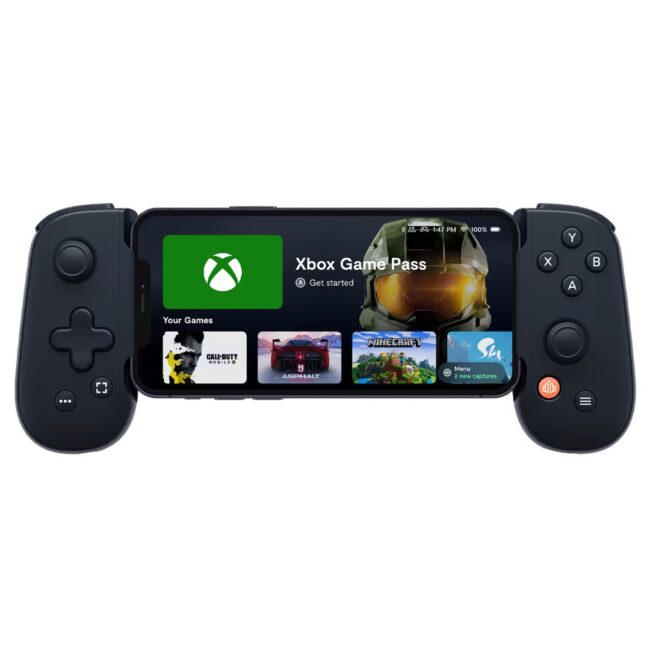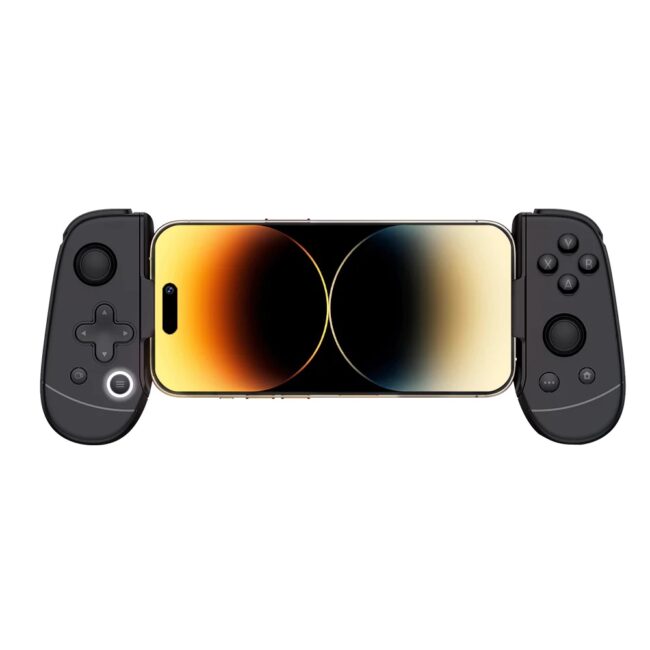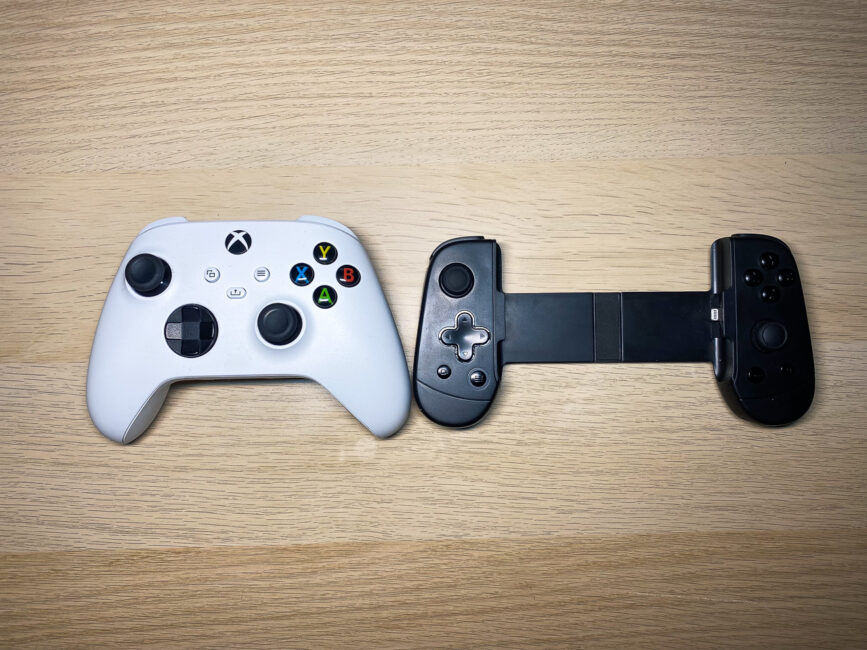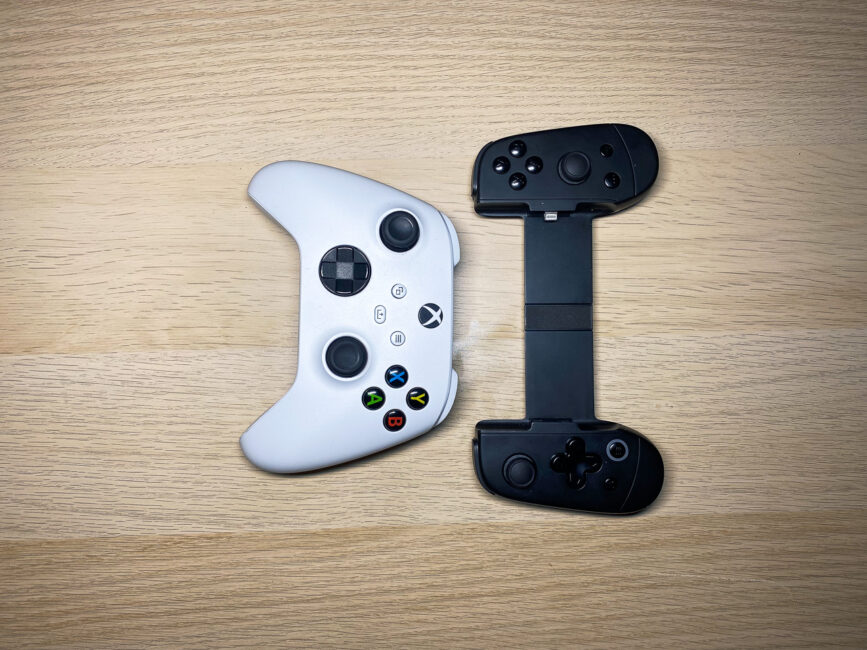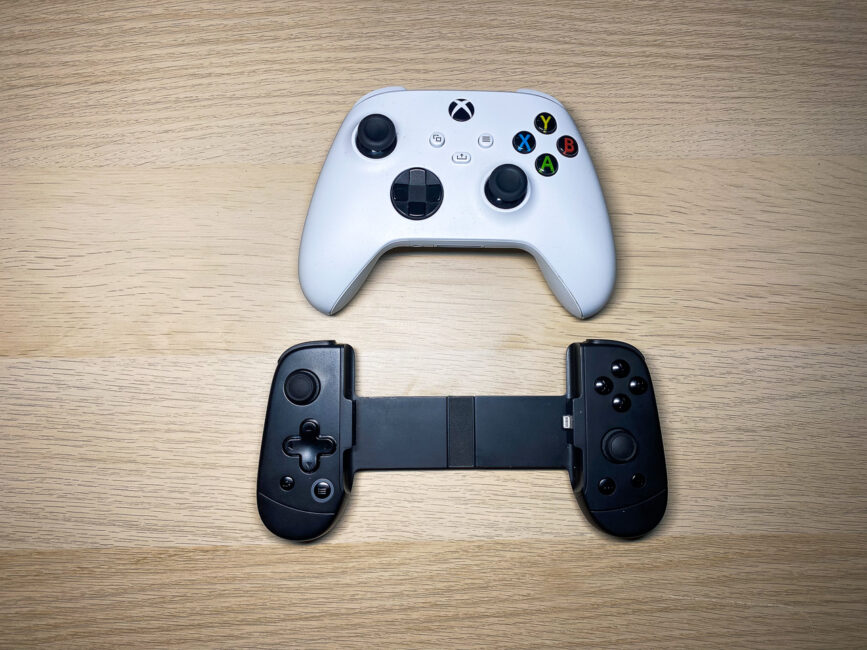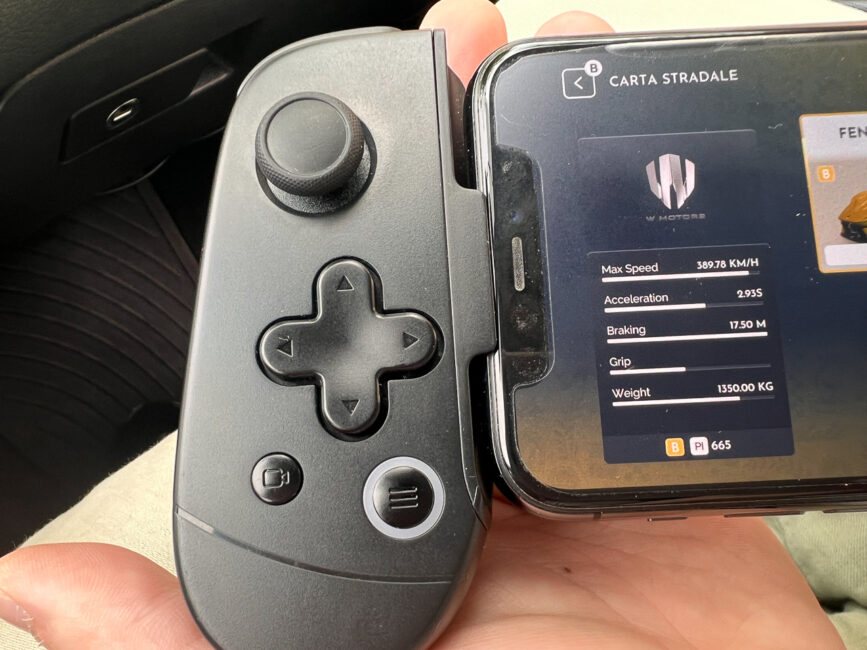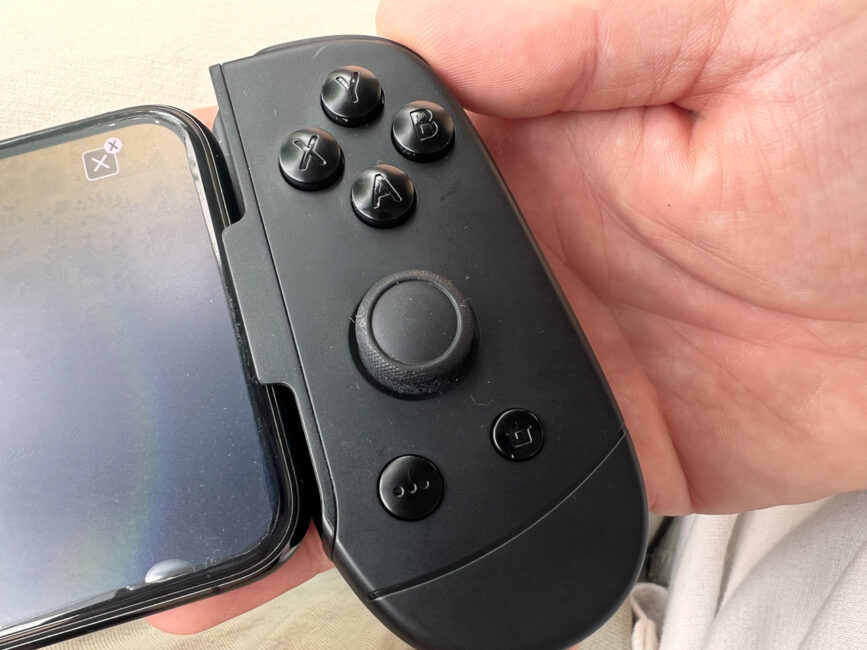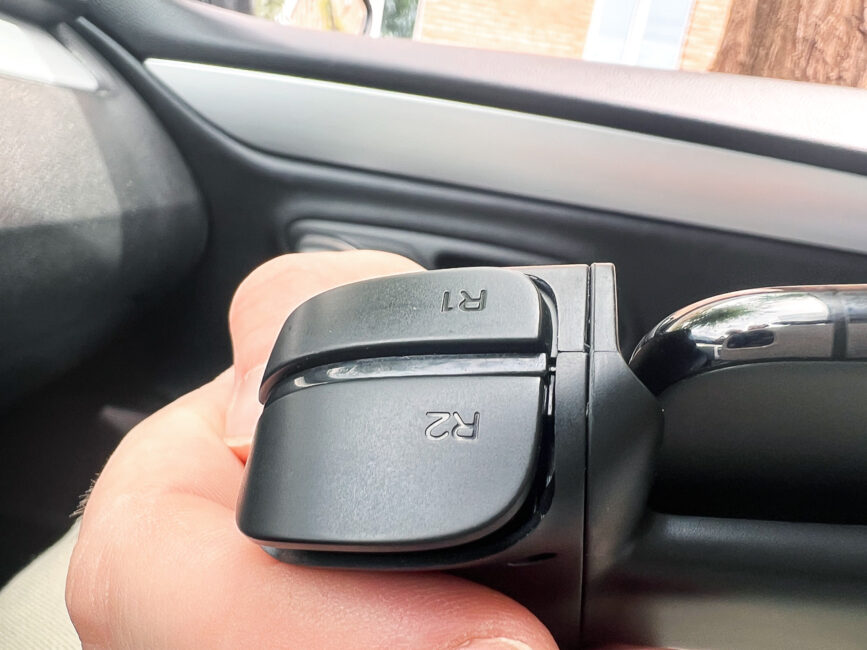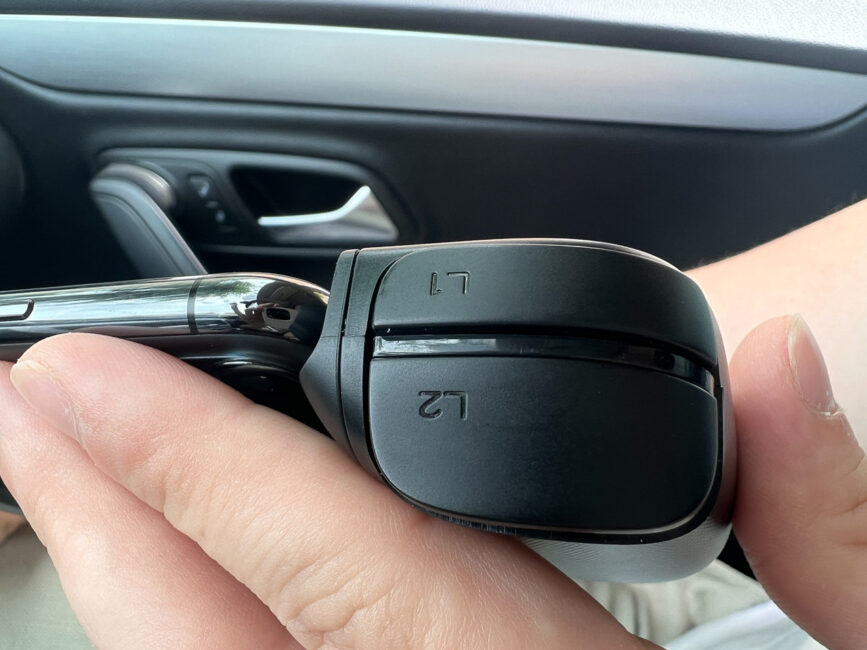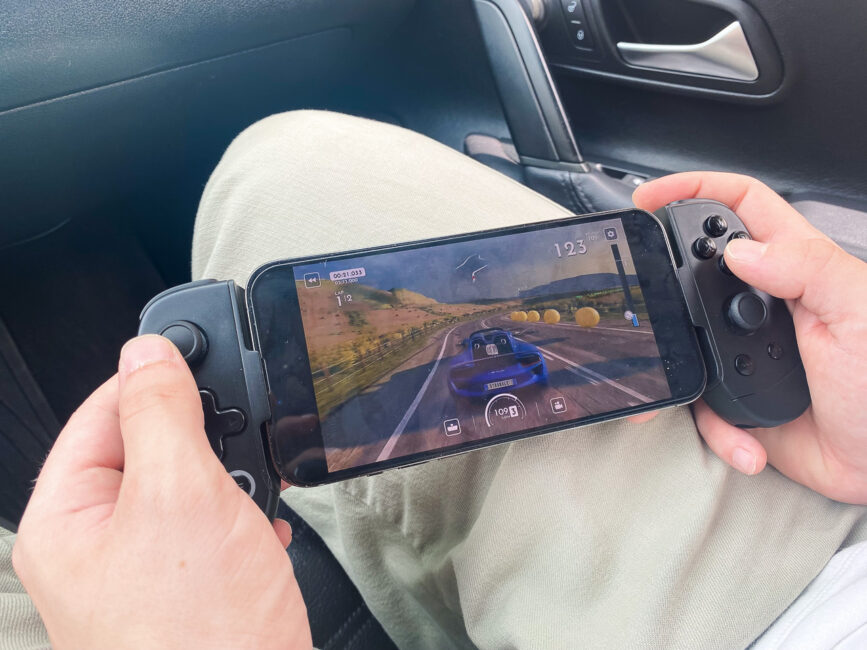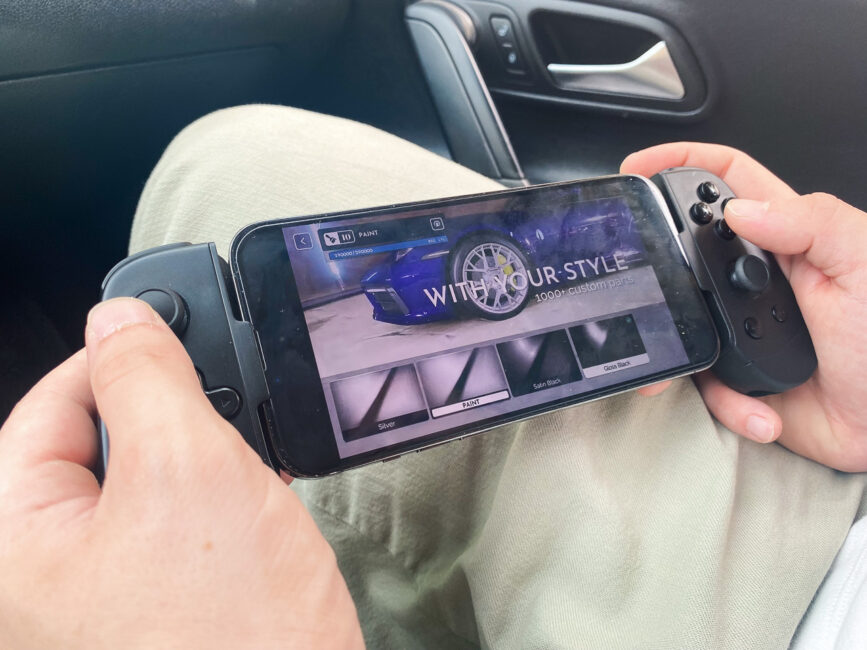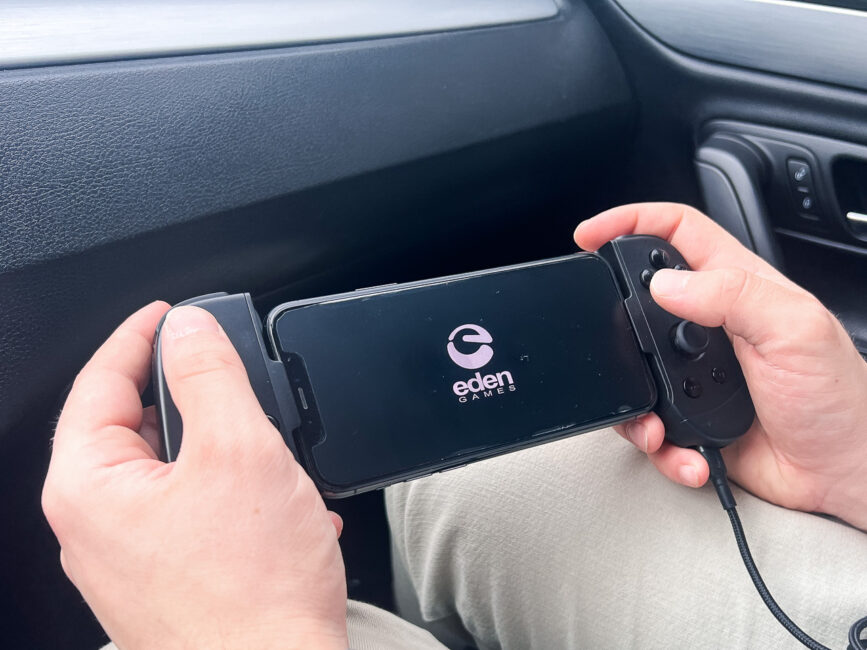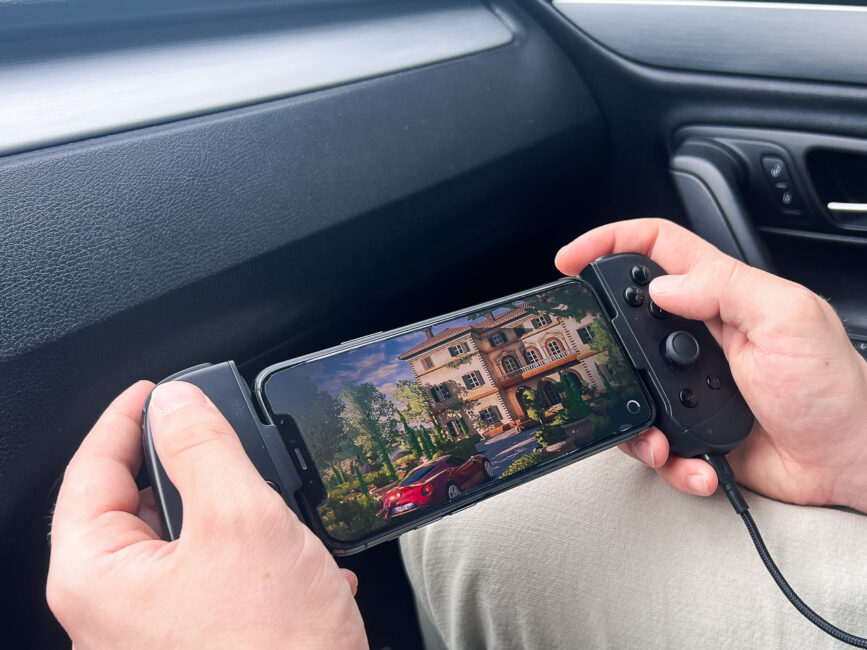A few years ago, the iPhone controller niche was a strange and inaccessible phenomenon: the number of MFi (Made For iPhone) controllers could be counted with one hand, they cost as much as branded controllers for current-gen consoles, and the number of use cases for them was extremely limited.
Everything changed with the introduction of Apple Arcade and cloud gaming services to the iPhone. The game controller for iPhone has turned from a novelty into a useful accessory: the number of games it supports is growing every day. Cloud services are already widely available, even in Ukraine (Boosteroid is one obvious example), and do not require any additional hassle with your smartphone. The time has come for new, affordable, and convenient accessories for gaming on Apple devices.
Leadjoy M1B is a great example of such an accessory. It is compact, compatible with all the modern iPhones, and works with Apple Arcade and regular App Store games. You can use it for cloud gaming, and it does not require a long and complicated setup process. It also does not cost all the money in the world.
Is this a perfect accessory for Apple gamers? Let’s find out in our review.

Read also:
Leadjoy M1B specs and what’s in the box?
The M1B is a shining example of a minimalist approach to available options, worthy of Mr. Henry Ford. The controller is available in a single version that is compatible with all iPhones with iOS 13 and higher, and in any color, as long as this color is black. And that exact modification I received for review. You can learn its specs in detail below:

- Layout: Xbox (X, Y, A, B)
- Compatibility: iOS 13 and later
- Connection: Wired via Lightning connector
- Clickable Analog Sticks for L3/R3: Yes
- Analog triggers: Yes, (Hall-effect magnetic sensors)
- Mechanical buttons: Yes
- Compatible with smartphone cases: No
- Battery: None
- Charging connector: Lightning
- Pass-through charging: Yes (10W)
- Dimensions: 196.5 × 95.0 × 32.5 mm
- Weight: 140 g
- In the box: Controller, rubber pad ×1, documentation, USB-C to Lightning cable
I didn’t disassemble the controller to check some of the bold statements about hall-effect triggers or mechanical switches, but let’s assume that the manufacturer is not lying. Moreover, judging by the way the buttons click and irritate my wife, we are really dealing with mechanical switches.
As for the package, there are only the most necessary things inside: the controller itself, a rubber pad for the camera bump (too bad, there’s only one), and a charging cable. Pretty minimalist. But there’s logic to this minimalist approach. More on that later.

Read also:
Connecting and using the Leadjoy M1B
Gone are the days when you had to jailbreak your iOS device and install some strange software to connect a cheap Chinese controller. Leadjoy M1B simplifies the connection with just 3 simple steps:
- Slide the left side of the controller to the left and place the top of the smartphone in the special recess
- Slide the right side of the controller to the right
- Insert the Lightning connector into the corresponding port of the smartphone

The indicator around the menu button lights up, and you’re ready to use the controller. No third-party software, no Bluetooth pairing, and no need to charge the controller. The wired connection solves all these problems at once: the controller is powered by a smartphone and has minimal latency.
The only caveat is that iOS doesn’t notify you when the controller is connected in any way: no pop-up notifications or additional menu elements. You just open your favorite game or cloud service, check if it supports the controller, and use it…
But wait… It turns out Temple Run Puzzle Adventure, which I’m addicted to, doesn’t support the controller. Well, makes sense… All-in-all it’s a three-in-a-row casual time-killer. So while I download some proper games, let’s talk about design and ergonomics.
Read also:
Design, build quality, and ergonomics of the controller
Appearance
It seems to me that Leadjoy’s designers didn’t bother much, and like those classic “Samsung/Xiaomi designers,” they copied the rather popular Backbone One controller and slightly changed the position of the additional buttons. But it’s not our business to discuss ethical and patent issues: let Leadjoy and Backbone decide it on their own. Let’s see, whether this design is worthy of imitation.
It is clear that the key goal in the controller’s design was to keep the controller as small as possible without compromising usability. The controller’s “sides” are shaped like an insect’s wing, narrowing at the top and widening at the bottom. This gives your palms a place to rest when you hold the controller.
At the same time, designers tried to keep the thickness to a minimum. So we have barely noticeable curves instead of two solid handles. It’s no match for an Xbox controller, with its perfect grip. More like Nintendo’s Joy-Cons.
Leadjoy also inherited its layout from Joy-Cons: on the left and right sides, the sticks and buttons are located almost in a line under each other. In practice, this means that using the right stick is not very convenient. At least for me, a person who is used to the Xbox controller, where the right stick is located much closer to the buttons and slightly to the left of them.
Well, it’s a matter of habit. At least the X, Y, A, B arrangement is right from the Xbox (X on the left, A on the bottom), otherwise, I’d be stuck learning the layout. The triggers (L2/R2) and L1/R1 buttons are in their classic places at the top of the controller. L3/R3 are here as well – one click on the analog sticks away.
There are no additional programmable buttons here, but there are additional function buttons: start and record on the left side and select and home on the right. I should note that they are not there for beauty and work, depending on the context.
Ergonomics
As for the ease of use – I have many questions. It is clear to me that small size was a key parameter in controller design, but it should not be at the expense of ergonomics.

Yes, the controller is not thick enough for a comfortable grip. If you need to use L1/R1 and triggers at the same time (as in Spider-Man: Miles Morales), you have to change your grip.

The same applies to the right stick: very often, I simply forgot about its location and was blindly hovering my finger to find it. In general, sticks are uncomfortable: they are too small, move too freely, and do not allow for accurate positioning (there is even a video somewhere where I get to the menu item on the third try).
But the main thing I miss in the analog sticks is resistance. Because of their size and how easily they move, it’s hard to get a sense of movement. Imagine that it’s the difference between turning left and turning 180° in a car or whether your character will sneak or fly across the screen. Not the best experience, isn’t it?
Another inconvenience is the inability to use the smartphone with the case. Neither branded silicone cases nor thin plastic covers, such as the Spigen one I use, allow you to insert the smartphone connector securely, so you always have to remove the case before playing. At least the manufacturer is honest about this.
It is also honest that the controller is compatible with all iPhone models, starting with the 6S. My 11 Pro fits perfectly in the controller, as does my wife’s 13 Pro Max. No complaints about the way the smartphone is attached.
Build quality
Also, the controller does not feel like a cheap Chinese fake. Don’t mind the use of inexpensive plastic and the overall flexibility of the design (after all, it is not a bug, but a feature to accommodate various Apple smartphone sizes), with a smartphone attached and a rubber pad, the controller does not cause any complaints.
I’ve experienced no stuck keys, no random keypresses, and the controller, in general, felt sturdy enough. And believe me, I’ve had first-party console controllers with stuck keys, right off the box.
And now that we’ve learned that the controller is usable let’s play.
Leadjoy M1B in gaming
To test the controller’s capabilities, I’ve tested both Apple Arcade and regular App Store titles, as well as Cloud Gaming via Boosteroid and Xbox Cloud Gaming.
App Store and Apple Arcade games
First of all, I had to try Call of Duty Mobile because the game not only supports the controller but puts you in a lobby with similar players. This way, you don’t have an advantage over those who try to play with the touch screen.
Despite the fact that there’s a learning curve to the controller layout (damn right stick), within 2 minutes, I was not only hitting headshots left and right but also managed to become MVP in the match I recorded. Of course, I don’t claim to be the most skilled gamer, it’s always easier to play with the rookies, but it proves that playing with a controller is much more convenient.
I can say the same about racing games. I tried two titles from the Apple Arcade catalog: Horizon Chase 2 and Gear Club Stradale. In both cases, there was no need for the right stick, so everything depended solely on my own skills.
Despite the fact that I haven’t played both games for a long time, it’s much more convenient to play with Leadjoy M1B than using the touchscreen: nothing obstructs the view, and you can concentrate on the track.
Of course, it didn’t help me improve my results – I didn’t win a single race. But I’m sure that without the controller, things would have been much worse.
Finally, I decided to try Fantasian, a mobile RPG from the creators of Final Fantasy that is exclusively available in the Apple Arcade. As in the case of racing games, I didn’t need the right stick, so I didn’t have any problems getting used to the layout.
And again, it’s incredibly nice that the control interface doesn’t obscure the screen. So you can enjoy the gameplay and don’t block the view with your fingers while playing. This is especially convenient for me, a fan of smaller smartphones, where the screen area is already limited.
I should also note that in all four games, I did not feel any lag at all. The wired connection ensures minimal latency, so any mistakes are solely due to my poor gaming skills.
However, it should be noted that this applies solely to the games installed on my smartphone. None of them required a connection to the server to transmit input. So, what about cloud games?
Cloud gaming
So, to start with, I chose the Boosteroid service and the Spider-Man: Miles Morales. Boosteroid has servers in Ukraine, and the gigabit internet connection at home allows for instant connection and, hopefully, minimal latency.
In addition, I have just completed the game on PC, so it was easy for me to tell, does the controller make any difference and if there is any latency.
In fact, everything was just as smooth, and I didn’t “miss” in any of the QTEs, which indicates minimal lag. But… The right stick let me down once again. In the most dynamic moments, when I needed to change the direction of the main character quickly, a stick always got in the way.
I should also note that the small and mechanical keys take some getting used to: I prefer the more extended key travel, like on an Xbox controller. The same goes for the sticks.
When I switched to Xbox Cloud Gaming and Forza Horizon 5, the VPN started to play against me. I had no problems with the picture quality, but there was a noticeable lag.
Does it have something to do with the controller? Not at all. Given that the sticks take some getting used to, I moved around easily, both in free-riding mode and in one of the events. Of course, I flew off the track a few times, but it was more likely due to the challenging route and poor skills – I hadn’t played Forza Horizon for a long time.
Overall impressions of Leadjoy M1B
The only thing I missed in locally installed and cloud games was haptic feedback. Due to the latency, it is extremely difficult to implement haptics in cloud games, but it would be very useful during local gaming sessions. Unfortunately, there was no room for additional haptic motors in the controller.

What I did find, and it was handy, was a record key for screenshots/screen recordings. iOS recognizes it and immediately offers to record the gameplay, which is extremely convenient: press twice to get a screenshot and hold for a second to start recording.
The only thing you need to keep in mind is that iOS takes time to save the screen recording, so after you hold the button down again to stop the recording, the notification that it’s saved arrives in a couple of minutes. At least, this is true for the iPhone 11 Pro. The smartphone also didn’t want to enable recording in the Xbox Cloud Gaming web app, so I had to open the control center to start recording.
It’s also good that you don’t need additional accessories to charge your smartphone. Despite the absence of a built-in battery (and why would you need one?), pass-through charging comes in handy. After all, the battery on an almost four-year-old smartphone dies right in front of your eyes.
The minor inconvenience is that you shouldn’t expect fast charging – 10W tops, despite the Lightning connector. But it’s enough to keep your smartphone working while you play.
Read also:
Leadjoy M1B price and conclusions
And despite all the quirks, gaming is much more enjoyable with the controller. No matter what, a smartphone controller is still helpful for rediscovering the titles you’ve already played with the touchscreen and trying something new. The compact and handy Leadjoy M1B helps you do just that: you only need to plug in the controller and play.

But here, I would like to point out the elephant in the room — namely, the cost of the controller. The solution from Leadjoy, on the one hand, is half the price of an almost identical controller from Backbone. The Leadjoy M1B costs $45.99 when ordered from the official website and $66 (excluding coupons) when purchased from AliExpress. Profit?
And this is where Sony DualSense comes in. The official controller for PS5 costs about $70 from authorized retailers. Yes, you’ll need an additional smartphone holder and lose the direct connection to your device. Still, for this money, you’ll get a much better and more versatile controller with excellent haptics and official support for Apple devices. And you don’t have to wait for it – DualSense is officially sold in Ukraine (if it’s available).
So is Leadjoy worth the price? If you’re looking for an iPhone-only controller and are unwilling to pay $100 or more, the Leadjoy M1B is a good choice. Getting used to it will take time, but you’ll be free of connectivity and compatibility headaches.
If you’re looking for a more versatile alternative, consider one of the 1st-party console controllers. Either way, the iPhone controller is no longer a toy for enthusiasts but a necessary and affordable accessory.
Where to buy
- AliExpress
- Official website Leadjoy
- Amazon US
- Amazon CA
- Amazon JP
- Amazon FR
- Amazon DE
- Amazon ES
- Amazon IT
- Amazon UK
Read also:
- iPhone 14 Pro Max experience: Is it as perfect as everyone thinks?
- No book is the same without a cat: 9 fictional cats that stay in your heart… and 1 real one
